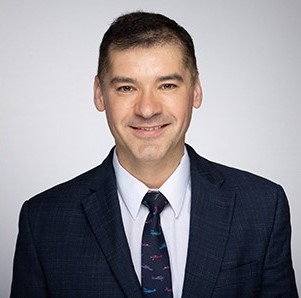New research highlights the urgent need to improve skin cancer prevention and awareness across Canada.
Ivan V. Litvinov, MD, PhD, dermatologist at the McGill University health Centre (MUHC), Scientist in the Cancer Research Program at The Research Institute of the MUHC (The Institute) and Associate Professor in the Division of dermatology at McGill University, is the senior author of a new study published in BMJ Public Health. It shows that there is a real need to raise awareness of skin cancer and improve our preventive behaviours in Canada.
A few facts
- Skin cancer is the most common of all cancer types. About one third of all new cases of cancer in Canada are skin cancers, and the rate continues to rise.
- Melanoma is one of the deadliest forms of skin cancer. However, it is preventable and can be treated if detected early.
- According to Melanoma Canada, in 2024:
- An estimated 11,300 people in Canada will be diagnosed with melanoma. This is an increase of 17% from 2023.
- An estimated 1,300 people in Canada will die from melanoma.
- Melanoma is among the most common cancers found in adolescent and young adult populations and it can significantly shorten a person's life.
Alarming trends across Canada
The new study describes alarming trends in UV exposure and sun-protective behaviours across Canada and highlights significant demographic and socio-economic disparities. The main findings indicate that:
- Three-quarters (75.5%) of Canadians spent at least 30 min in the sun between 10:00AM and 4:00PM on days off in the summer, with 45.7% spending ≥2 hours
- One-third (33.3%) of Canadians reported having had a sunburn in the past 12 months, and most reported using sunscreen only occasionally or not at all on their body (64.3%) and face (58.1%)
- Trends showed an increasing prevalence of spending 2 hours or more in the sun and a decreasing trend in using sunscreen on the body and face for both men and women.

"Episodic sunburns, particularly in childhood or adolescence, significantly increase the risk of developing melanoma later in life. Even one blistering sunburn in childhood or adolescence more than doubles your chances of developing melanoma later in life", says Dr. Litvinov, a senior investigator on the study. "Hence, our data showing that people are exposing themselves more to the sun while using less sun protection over the years is very concerning. Furthermore, our data shows that this trend is, unfortunately, exacerbated in Canadian youth."
Youth
These findings in Canada are corroborated by survey data in the USA, which has also shown young people aged 18–24 years to be less likely to protect themselves from the sun. Literature suggests that sun exposure and tanning behavior among youth is related more to a sense of invulnerability to the risks of UV exposure and the esthetic appeal of looking tan, rather than to a lack of knowledge. According to the authors of the study, cost and lack of accessibility to sun protection products may also drive lower sun protection habits in young people.
Minorities
In the study, immigrants, Indigenous individuals and visible minorities were less likely to use sunscreen on their face and body compared with their counterparts, although they were more likely to wear long pants or skirts as protective barriers.
Socioeconomic status
In the study, income quintile appeared to be a significant predictor of UV exposure and sun-protective practices, pointing to:
- Increasing trends in time spent in the sun, odds of sunburn and odds of tanning bed/booth use with increasing income quintile.
- The highest income quintile had 78% higher odds of using sunscreen on the body and 145% higher odds of using sunscreen on the face, compared with the lowest income earners, potentially indicating financial barriers related to the high cost of sunscreen products.
"These findings are important given evidence suggesting that higher socioeconomic status (SES) is related to increased incidence of melanoma, but populations of lower SES have an increased risk of advanced melanoma diagnosis. Increasing accessibility and education around sun protection may thus potentially avoid some of the most serious cases of melanoma," says Dr. Litvinov.
The data used in this study comes from the Canadian Community Health Survey. The authors examined sun-protective behaviors and UV exposure in of over 77,000 individuals aged ≥18 years during 2011–2018. The weighted sample represents >21 million Canadians.
About the study
The study Evaluating UV exposure and skin cancer prevention behaviours in Canada: a national population-based cross-sectional study was conducted by Amina Moustaqim-Barrette, Hibo Rijal, Santina Conte, Mahan Maazi, Johnny Hanna, Alexandra Sarah Victoria Kelly, Alicia Belaiche, Alyson McKenna, Sandra Pelaez, François Lagacé and Ivan V Litvinov.
This research was supported by the Canadian Cancer Society, the Canadian Institutes of Health Research (CIHR) Institute for Cancer Research, the Cancer Research Society (CRS)-and the Fonds de recherche du Québec—Santé.
